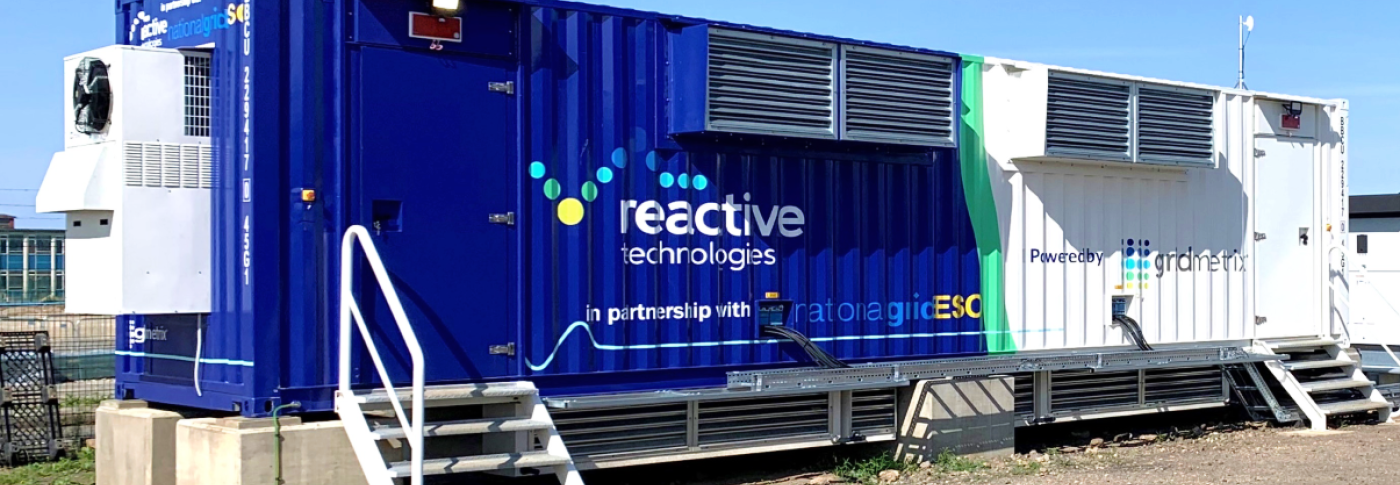
How the ‘sonar of the power grid’ is helping Britain to decarbonise
21 Oct 2021 - 3 minute read
The government’s new net zero strategy has made clear Britain’s commitment to achieving net zero emissions by 2050. As the country’s electricity system operator, our goal is to help make that happen by preparing the grid to be able to run entirely with clean power by 2025.
To achieve that 2025 ambition, we need to be able to keep the system stable as more and more zero carbon generation connects to it. That means managing its key properties such as voltage, frequency and – crucially – something called inertia.
What is inertia? It’s the kinetic energy stored in the spinning turbines of generators on the grid. If there’s a sudden change in system frequency, these big heavy turbines carry on spinning – even if the generator itself has lost power – and will slow down that change (the ‘rate of change of frequency’ or RoCoF) while our control room restores balance. Think of a spinning top: when you take your hand away, the top’s inertia is making it continue to spin.
We’re collaborating with industry to develop and roll-out two tools in our control room which will boost our ability to manage vital aspects of system stability like inertia.
What tools are helping us manage system stability?
One tool has emerged out of an innovation project with industry, and is a partnership with Reactive Technologies. It reaches a key milestone today with the launch of the world’s largest continuously operating grid-scale ultracapacitor in Teesside in northeast England.
Together with Reactive’s “XMU” measurement units which measure frequency up to 48,000 times per second, the system can send and receive pulses of power through the grid like the underwater sound waves used in sonar. Once live in our control room next year this will provide an accurate measure of power system stability.
It’ll be the first time anywhere in the world that signals have been sent in this way through a power system to allow properties like inertia to be measured in a live operational environment.
The second tool we’re deploying is GE Digital’s effective inertia measurement and forecasting service, which measures frequency and power flow changes between regions of Britain 50 times a second to give our control engineers a real-time view of system inertia.
Its machine learning model also integrates with our control room system to give a 24-hour ahead forecast of system inertia – a vital view for our engineers in ensuring security of supply.
How will this help Britain reduce its emissions?
Traditionally the ingredients we’ve needed to keep the grid humming along at a stable 50Hz frequency – for example inertia – have come from the spinning parts in coal and gas plants.
As these power plants are phased out to meet Britain’s net zero targets, we need to have better visibility of the inertia on the system to be able to manage it and safely connect more zero carbon power – and that’s where these tools come in.
Today we have one of the world’s most reliable electricity systems owing to how we’ve been able to accurately estimate inertia. Our new tools will provide better measurement, and ensure we can secure a future system with high volumes of clean energy.
It’s part of our pioneering approach to grid management that also includes our stability pathfinder project, which is finding new and innovative ways for technology to provide stability to the grid without needing to generate electricity.
The combined approach of the stability pathfinder and our new inertia measurement capabilities means that in the future, when enough zero carbon generation is available in the market, we will be able to use it to power the grid 100% carbon-free – and help Britain towards its net zero goals.
